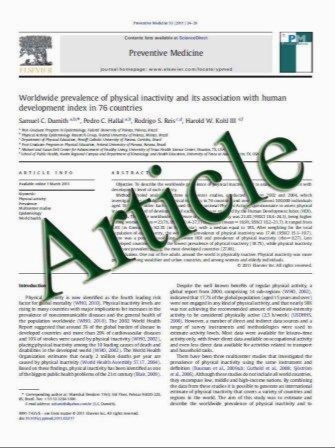High immunogenic potential of p53 mRNA-transfected dendritic cells in patients with primary breast cancer
- نوع فایل : کتاب
- زبان : انگلیسی
- مؤلف : O¨zcan Met Eva Balslev Henrik Flyger Inge Marie Svane
- چاپ و سال / کشور: 2010
Description
As pre-existent immunity might be a reflection of an emerging anticancer response, the demonstration of spontaneous T-cell responses against tumor associated antigens (TAAs) in cancer patients may be beneficial before clinical development of dendritic cell (DC)-based cancer vaccines, because it will help to identify likely responders to TAAs among patients who qualify and may benefit from this form of immune therapy. This study aimed to determine pre-existent T-cell reactivity against the tumor suppressor protein p53 in breast cancer patients (BCP) at the time point of primary diagnosis. After a shortterm stimulation with autologous wt p53 mRNA-transfected DCs, IFN-c enzyme-linked immunosorbent spot (ELISPOT) analysis revealed p53-reactive T cells in the peripheral blood of more than 40% (15 of 36) of the tested patients. Both CD4? and CD8? p53-specific T cells secreted IFN-c after stimulation with p53-transfected DCs. Interestingly, more than 72% (13 of 18) of patients with high p53 (p53high) expression in tumors were able to mount a p53-specific IFN-c T-cell response, in contrast to only 10% (1 of 10) of healthy donors and 11% (2 of 18) of patients with low or absent p53 (p53low) expression in tumors. Furthermore, significantly higher secretion of IL-2 was detected in peripheral blood mononuclear cells after stimulation with p53-transfected DCs from patients with p53high tumor expression compared to patients with p53low tumor expression, whereas secretion of IL-10 was predominant in the latter group. The high frequency of spontaneous wt p53-reactive T cells detected in the peripheral blood of primary BCP with accumulation of p53 in tumor provides a rationale to consider DCs transfected with mRNA encoding wt p53 for clinical investigation in these patients.
Breast Cancer Res Treat (2011) 125:395–406 Received: 4 September 2009 / Accepted: 10 March 2010 / Published online: 25 March 2010 Springer Science+Business Media, LLC. 2010


